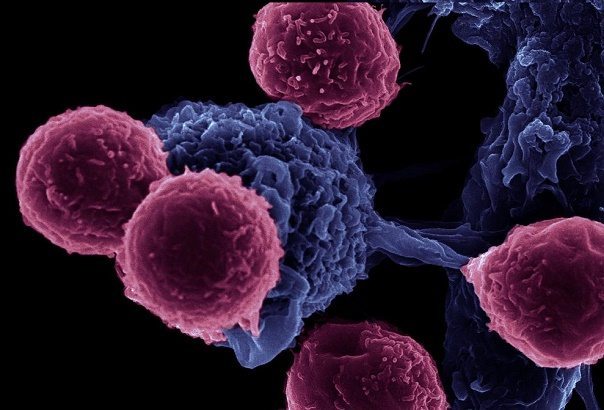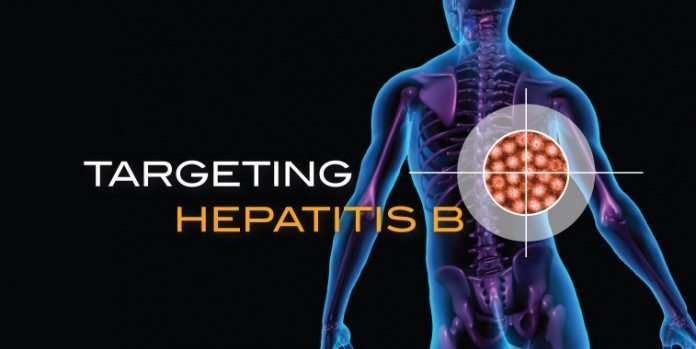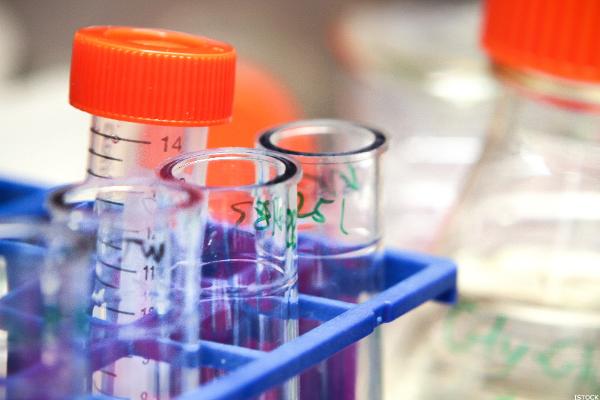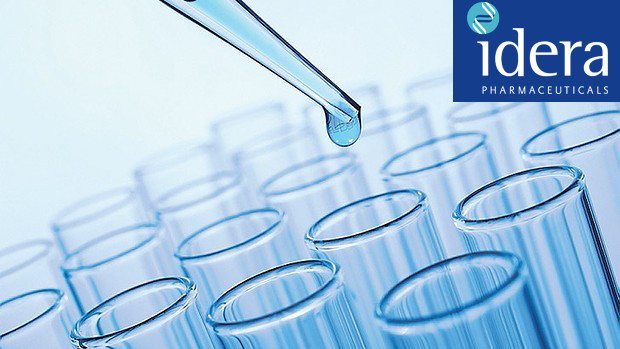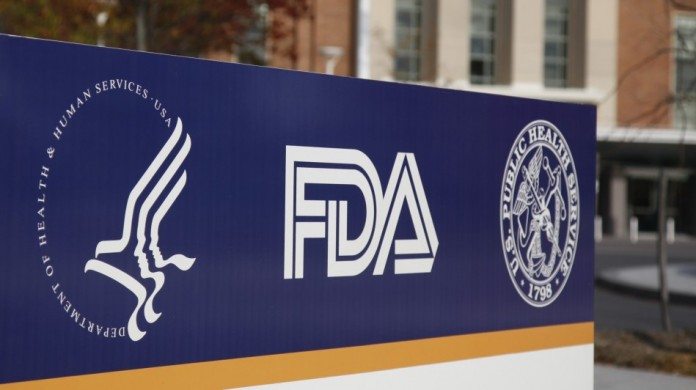In the rheumatoid arthritis (RA) treatment space, Humira is king. The drug generated $11 billion revenues for AbbVie Inc. (ABBV) during 2014, accounting for more than 60% of the company’s total revenues and forecast to generate between $13 billion and $18 billion by 2020. The drug is a TNF inhibitor – it binds to tumor necrosis factor-alpha (TNFα), stopping the TNFα from binding to TNFα receptors – the process that initiates the inflammatory immune response and causes RA.
Humira, however, is not the first line treatment for RA, despite its lead in revenues. First line is a drug called methotrexate. Methotrexate is a systemic treatment, which means it targets the entire immune system, whereas Humira targets a specific element of the immune system. When taken alone, Humira has no real benefit over methotrexate, and methotrexate has a huge price benefit – coming in at $13-$85 a month versus Humira’s $1662 price tag. When taken in combination, however, the two drugs become far more effective than as single entities. This is what makes Humira a bestseller.
Abbvie’s forecasts for Humira notwithstanding, the drug’s patent expires at the end of 2016. This will open it up to generic, biosimilar competition. As illustrated by a number of recent buyouts and collaboration agreements, Big Pharma is scrambling to enter the space with an alternative.
On October 9 Roche Holding AG (RHHBY) bought Adheron Therapeutics in a deal potentially worth $508 million. The buyout sees Roche acquire Adheron’s lead candidate SDP051, a biologic that serves as an antibody to Cadherin 11, which is a protein that plays a part in initiating the immune response that leads to RA.
Just last week, Five Prime Therapeutics, Inc. (FPRX) got HSR clearance for a $350 million upfront collaboration with Bristol-Myers Squibb Company (BMY); a collaboration that will see the co-development of Five Prime’s lead RA candidate, FPA008. FPA008 inhibits the stimulation of macrophages that produce interleukin-6 (IL6) – a protein that attracts and activates inflammatory cells in RA sufferers.
Both of these candidates are yet to reach phase II, meaning Roche and BMS are willing to bet big on very early stage alternatives to Humira; alternatives that target a specific element of the immune system mechanics of RA (more specifically a step in the inflammation process), but a different element to that of Abbvie’s blockbuster.
Abbvie targets TNFα. Roche is targeting Cadherin 11. BMS is targeting IL6. Markets are on the lookout for the next big deal in the space, and there are several companies with early stage candidates that, just like FPA008 and SDP501, target a different element of the inflammatory process that leads to RA. One especially promising is a drug in development called PRTX-100.
PRTX-100 is the lead candidate of Protalex Inc. (PRTX), a development stage biotech based in New Jersey. The drug has completed two phase I trials to date, one in South Africa that concluded in 2013, and one in the US that concluded at the end of last year. The science behind PRTX-100 is as follows. There are two kinds of macrophages active in the immune system. One is inflammatory, the other anti-inflammatory. Protalex is attempting to stimulate macrophages in the immune system that are anti-inflammatory, meaning they counter the effect of macrophages that are inflammatory.
The mechanism of action is rooted in a protein called Staphylococcal Protein A (SpA), of which PRTX-100 is a highly purified formulation. It is composed of five “binding domains”, each of which bind to an associated element of an antibody called IgG. Nobody really knows exactly why, but when you introduce SpA to human serum that contains excess IgG, the two bind to form a small complex. This newly formed complex induces what the company refers to as regulatory anti-inflammatory macrophages.
Rheumatoid arthritis occurs when the immune system induces an inflammatory response in joint tissue, which leads to inflamed and painful joints. By mitigating this inflammation with the SpA/IgG complex induced anti-inflammatory macrophages, Protalex believes it can use PRTX-100 to treat the disease.
Do the already completed trials support this hypothesis? So far, yes. RA response to treatment is measured using what’s called the American College of Rheumatology Response [ACR] rate. The standard response is ACR20, which is defined as a 20% improvement in both the tender joint count and the swollen joint count in a patient. ACR50 and ACR70 are self explanatory – a 50% and 70% reduction in the same.
In a phase Ib with primary endpoints of ACR20, ACR50 and ACR70, 31% of 29 patients had an ACR20 at day 29 versus 12.5% of a placebo arm, 32.1% had an ACR50 at day 57 versus 12.5% on the placebo arm, and 10.7% had an ACR70 at day 57 versus 0% in the placebo arm. A phase 1a demonstrated concurrently that PRTX-100 is safe and tolerable, with the vast majority of adverse events being grade 1 and 2, with two grade 3 AEs presenting themselves – one unrelated influenza and one related arthritis worsening.
So what is the market potential if Protalex can get the drug through to commercialization? At this stage, it’s impossible to put a precise number on it, primarily because there are a number of biologics currently available, and we’d need a better idea of the drug’s efficacy and safety profile to see where it would fit into the current landscape in terms of physicians and patients weighing up clinical benefit versus side effects. There is one element of PRTX-100 that we can consider, however, in an early attempt to gauge market potential.
Specifically, it will likely cost far less than its competitors. Because it is a purified protein formulation produced by bacteria, PRTX-100 can be produced by bacterial cell culture. In contrast, drugs like Humira are created using genetic recombination – a process that involves the bringing together of genetic material from various sources. This is much more expensive, hence the higher cost. The difference in production cost should translate to a cheaper end product and in turn, should make PRTX-100 more attractive to patients and insurers – assuming comparable efficacy and safety profiles.
According to an analysis report conducted back in 2013, the market potential for PRTX varies from a low end of $300 million to an upper limit of $4 billion. This is obviously quite a disparity, but as data from forward trials comes in, we should be able to use it to further pinpoint PRTX-100’s position in the space, and in turn, narrow the potential revenues window.
On that note, what are we looking at from a time to market perspective, and what milestones should we be on the lookout for as potential upside catalysts for Protalex? The company is currently undertaking a continuation trial from its phase 1b, evaluating the continued response rate of twelve of the patients that took part in the study we have already discussed. This is a six-month phase I/II study, and was announced in March, with a primary completion date of February 2016 – enrollment is ongoing. Data from this trial should offer insight into the extended response rate as well as continued safety and tolerability – primary endpoint is safety and the secondary endpoint is ACR28 – so expect some upside momentum if the trial can replicate, or improve upon, the results demonstrated in the phase Ib.
Beyond that, the company expects to initiate a phase II in the RA indication during the first half of 2016. Again, this could be an upside catalyst, especially against the backdrop of positive phase I/II data in February. If phase II completes successfully, Protalex has a scheduled start date for a phase III of early 2017, meaning time to market assuming everything runs smoothly is circa three years, somewhere around late 2018, early 2019.
The next question is, has the company got enough money to take PRTX-100 through to phase II completion? The answer is, probably not, at least as it stands now. The company isn’t generating any revenues, and is running at an operational loss of $3.5 million based on Q3 2015. Further, it has debt of around $12 million, and less than $1 million cash on hand. Protalex agreed on a $5 million credit facility at the end of last year, but reported in June that as of May 31, it had used $3.3 million of that facility, meaning it has likely burnt out by now.
Inevitably, then, Protalex must undergo some sort of financing to carry it forward. This may be as part of a share issue, which may dilute early stage holdings, or a collaboration agreement such as those we mentioned in the introduction to this piece. The latter, of course, would likely be the more attractive option for Protalex and its investors. Big pharma looks willing to bring triple digit millions of dollars to the table for early stage alternative approach biologics for RA indications – and PRTX is one such alternative approach.
Which brings us to our closing remarks. At a glance, Protalex is a risky allocation. It has a very thin balance sheet, and is moving into the second and third phases of clinical development, both of which are notoriously drawn out and costly. However, and as illustrated by a number of recent deals, it is part of a subsector of potential Humira competitors that is attractive to some of the large players in the space at present. Its candidate has demonstrated efficacy in a RA indication in phase I, just as has those of Adheron and Five Prime, and the company will be actively seeking collaboration given its current financial standing.
As a standalone investment, Protalex looks to be too risky. But the chances of an early stage Big Pharma buyout, especially if the phase 2 extended results come February are a success, cannot be ignored. Whether Big Pharma takes notice remains to be seen, but we’ll have a better idea come February. We do know big players have one eye on the space, and Protalex looks to tick the boxes required to draw their attention.
The way the deal Roche/Adheron deal was structured made most of the cash contingent on milestones. This is how most early stage acquisition deals are structured, saving the bigger company the risk if the drug fails later trials – they don’t have to pay the milestone payments obviously. If PRTX-100 gains the attention of Big Pharma come February, we can expect a similar style deal, one contingent on milestones. If, however, serious side effects are discovered among long term patients, it could be devastating for Protalex, and investors should keep this in mind despite promising data to date.
Protalex is a $136M company right now, and an early buyout on the level of Adheron could potentially quintuple that. Watch out for the coming phase 2 results come February. If they are positive and PRTX-100 shows no side effects and significant efficacy, I’d say that an early stage acquisition is even likely, given Humira’s coming patent expiration leaving the RA market more open than it’s been in years.




